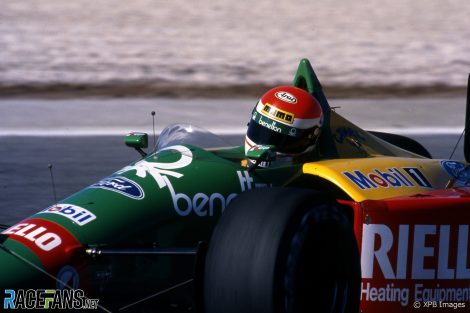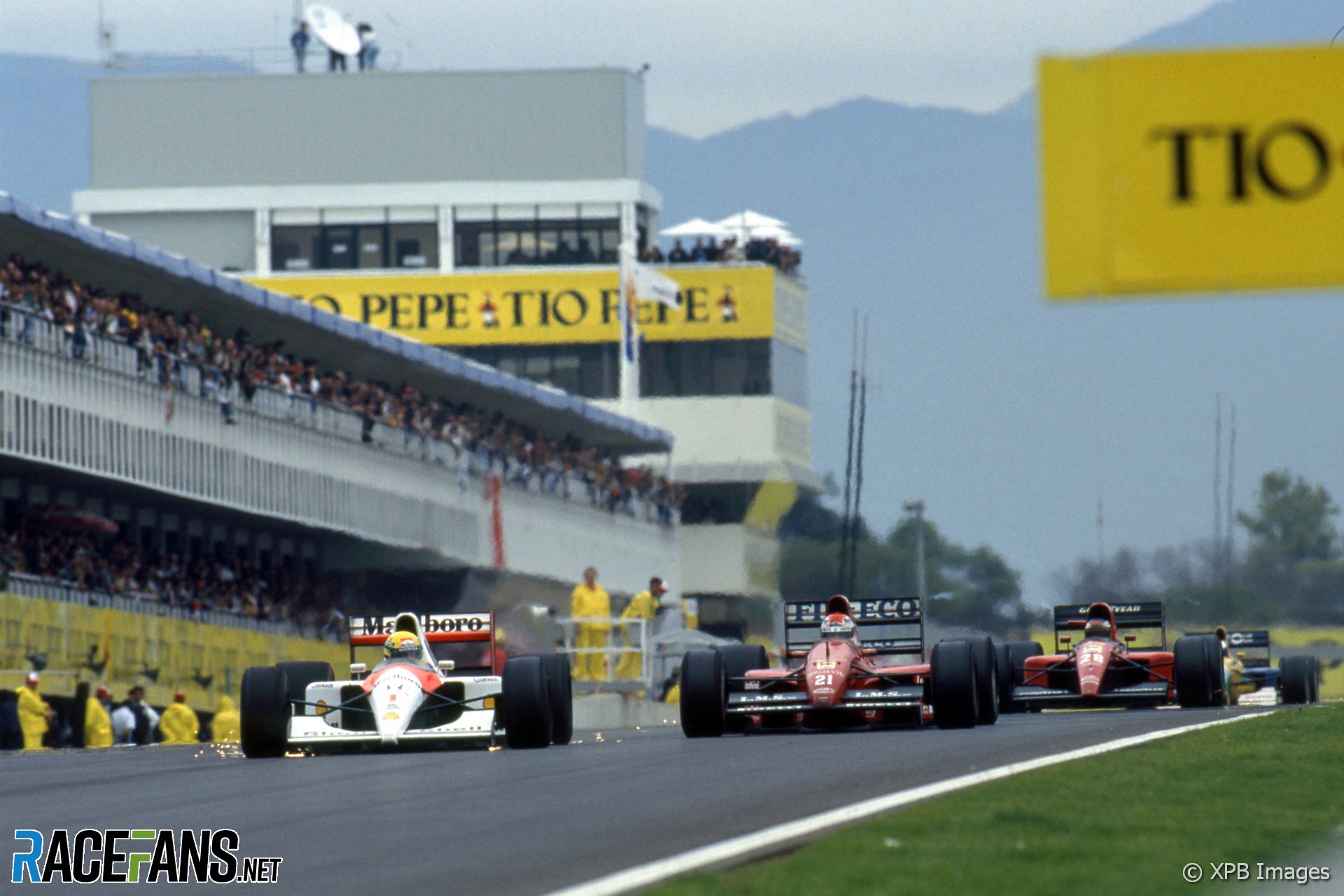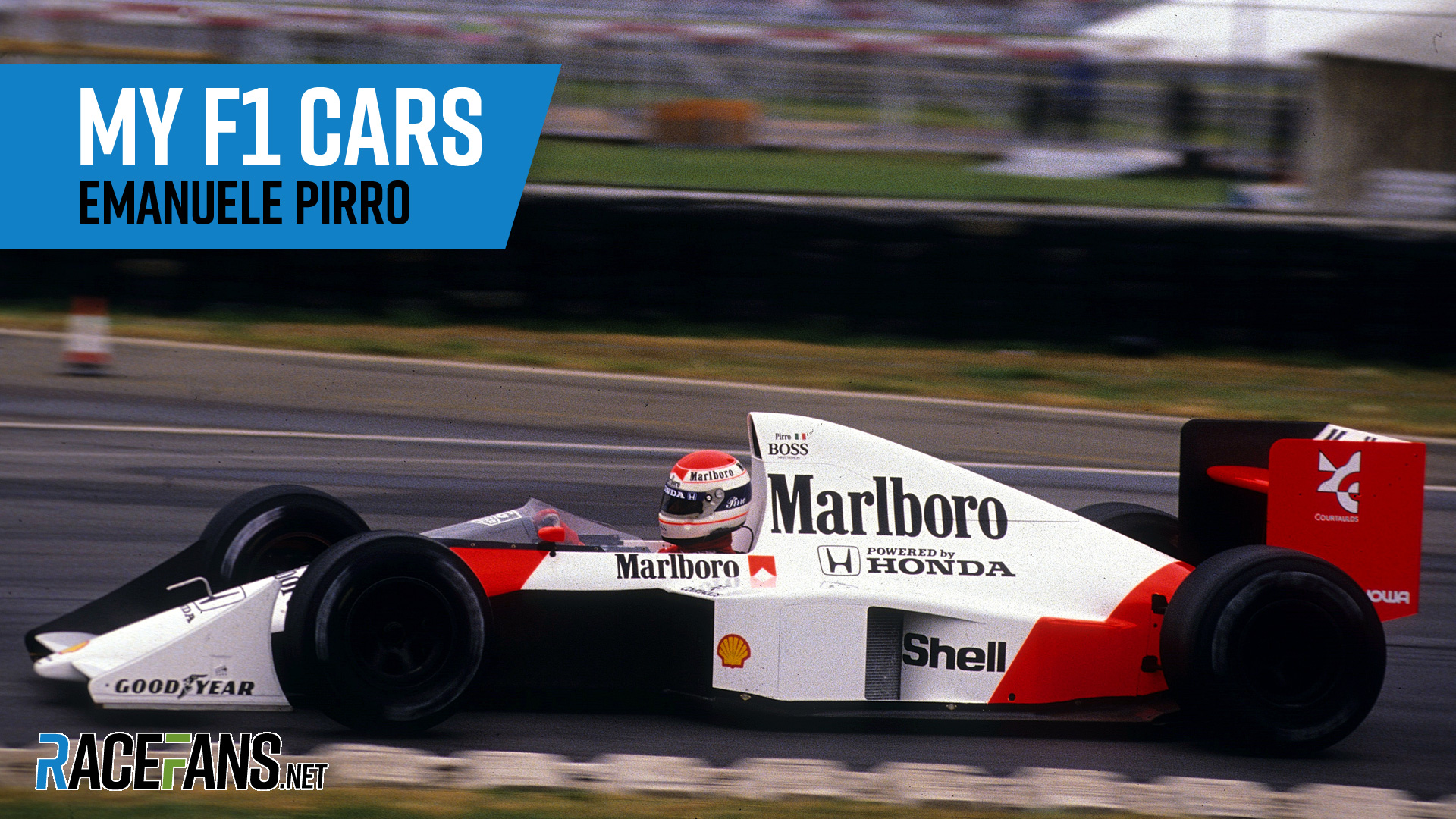Emanuele Pirro is recognised as a leading sports and touring car driver. Now 59, his racing CV includes no fewer than five victories in the gruelling Le Mans 24 Hours, plus touring car titles scored in Germany and Italy (twice) and various other successes at international level.
Less well known is that Pirro also played a crucial role in developing the iconic McLaren-Hondas raced to championships by Ayrton Senna and Alain Prost, though he never raced anything as potent during his three years of grand prix racing.Introspective, unfailingly polite and always ‘correct’, Emanuele is an ambassador for Audi, runs a luxury Dolomites lodge with Belgian wife Marlene – they met during the Monaco F3 race – and competes in classic events (Covid permitting). However, he is probably best recognised by contemporary fans as the FIA driver-steward for around four grands prix per year.
Despite his undoubted talent – he won a run of junior championships – the missing ingredient was budget, so considers himself fortunate to have competed in 40 grands prix between 1989 and 1991.
After hitching his star to Onyx Racing for 1984 he scored a podium during his first F2 season, staying with the team for two seasons after F2 was replaced by F3000 – using cast-off Cosworth DFV engines when F1 switched to turbo units.

“Quite brutal, because at the time there was free boost and in terms of feeling, I have very clear memories because F3000 was already a rather heavy car with good power and not really brutal but quite a ‘muscle’ car. You had to be on top of the [turbo] car otherwise it was very easy to be left behind, in a metaphorical way.
“At that time all [teams] wanted to generate downforce because turbo power was easy to achieve. The cars carried a lot of drag, the rear wings were straight up, vertical. On and off throttle was a big difference – apart from turbo lag there was a big push on- and off-throttle.
Advert | Become a RaceFans supporter and
The BT54 suffered “significant” lag, Pirro recalls, adding, though, that it was a vast improvement over the Group 5 Lancia Monte Carlo he raced at Le Mans in 1981, which had a three-second void between foot flat and full power.
“The aero brake [due to drag] was bigger than full braking in my F3000, so you had to be really careful using the throttle in both directions. I remember the car had to be driven with muscles but also with fingertips.”

Although Emanuele impressed sufficiently to be promised the drive, he lost out to Marc Surer who, he says, had better connections with engine supplier BMW. Thus, it was back to Onyx and F3000, being classified third both years. With no promotion to F1 on the horizon Pirro switched to touring cars for 1987.
At year-end he received another F1 call-up – from Benetton who were testing rookies at Donington in the BMW-powered B187, each having 16 laps to impress. Pirro was fastest and beat the benchmark set by regular Teo Fabi, but adds, “I don’t want to sound arrogant because I’ve had similar situations where you set a benchmark to see the car is okay. I have incredible respect for his career.”
He recalls the “the brutality of the grip. At Donington normally you go quicker in small steps, but there was no time so I had to guess the speed I could go because it was familiarisation, then a new set of tyres.
“I thought ‘If the car stays [on the track], it does otherwise I’m going to make a major shunt’. I couldn’t afford to go with another mindset. I kept my foot down feeling it can’t be that the car is still sticking to the ground. I think this is why two years later [Benetton] called [offering a full-time drive].”
Then came a career-changing opportunity: Promotional work for Marlboro and McLaren in the USA, which led to greater things.
“I was living in London and my best friend was [McLaren driver] Stefan Johansson, and [Onyx boss] Mike Earle was good friends with [McLaren team principal Ron] Dennis. I got an invitation from Ron.
Advert | Become a RaceFans supporter and

“I packed my suitcase, and they organised my [Japanese] F3000 season [winning with local team Le Mans]. Basically, my single seater career reopened.
For four years Pirro thrashed a McLaren-Honda around the figure-of-eight circuit on a fortnightly basis, nine to five, in sun, cloud or rain.
“Remove some weeks of January and Christmas and basically that was the schedule. I have no records about kilometres or days, but it was every fortnight, Tuesday, Wednesday, Thursday, full time, driving, driving, driving. In today’s terms, it’s crazy. Absolutely.”
The McLaren-Honda MP4/4, which won 15 of 1988’s 16 races, was, Emanuele recalls, “A very good car because it had a fine balance between power, aero and mechanical balance, drivability and versatility. It was by far not as brutal as other cars; it was [gentle], especially at low speed because McLaren were trying to generate some mechanical grip using Showa dampers.
“Going through the gears and picking up speed the car would sit down on its bumper rubbers, with the aero load becoming stiffer. At high speed the car was really good and rather stiff, but at low speed it was light and almost old school to drive.

“The only thing, it was a small car for my size.”
The normally aspirated V10-powered MP4/5 developed for 1989 was a strikingly different machine. “That required a lot more fine-tuning, because it was more brutal, not as brutal as the [later] V12. It wasn’t as nice [as MP4/4] in terms of dynamics because the engine was bigger – not as big as the V12 but bigger than the V6 [turbo].
“The car lost a little bit of driving pleasure because of the mass of the engine, but it was faster because the initial pick-up and initial acceleration of the normally aspirated engine was better.”
Pirro tested in Europe – Silverstone, Estoril and Jerez – and grins when he recalls setting fastest lap at the latter. “I was fastest of all cars, they were FOCA tests so everybody was at the test. A small piece of satisfaction, it was nice.”

Pirro signed with the latter as replacement for Johnny Herbert – still suffering after-effects from his horrific 1988 F3000 crash – as team mate to Alessandro Nannini, and made his F1 debut at the French Grand Prix in a B188, switching to the newer car two races later. Although similar in concept, the B189 was powered by Cosworth’s HB, not the venerable DFR.
“Everything was better” he says. “Aerodynamics, engine power, engine weight and they used the front wing as a ground effect device, so it had long chord (distance between leading and trailing edges) which worked as an undertray, like a ground effect wing using the venturi effect. The problem was, this required accurate control of the front ride height.
“In theory it was a good system, and [designer] Rory Byrne was very kind in an interview, saying ‘I wish I could have given [Pirro] a better car for the short time he was with us.’ That was really nice.
“Later they came with a new front wing and the car became a dream to drive. It was really fast on the straight, even with the engine not being in the same league [as Honda] because I kept testing the McLaren that year and the next two years.”

The B189 was fast enough for Pirro to score his first F1 points with fifth in a drenched season-closing Australian Grand Prix, stopped after 70 (of 81) laps. In the confusion his crew screwed up the pit board, using a plus sign rather than minus. Despite pulling clear of Pierluigi Martini’s Minardi at a rapid rate, he thought he was being caught until he saw a white car ahead.
“I thought he passed me, and I didn’t even realise. Don’t laugh, but when you are in a difficult situation with the visor all misted up and tired … I didn’t know why I didn’t crash just because of that plus and minus!”

The first BMS season was massively disappointing, being blighted by unreliability: 23 retirements and two ‘Did Not Qualify’ across 16 grands prix, i.e. 32 attempts.
“1990 was nothing but frustration, with engine problems and the car was slow. We ended up pre-qualifying the following year. But from a pleasure standpoint it was a nice season because I got self-confidence. At Benetton, because of my [height] it was not easy for me and Sandro (Nannini), apart from once, qualified ahead of me.
“But Andrea was a good benchmark, and in qualifying I was a bit more often quicker than him, which was good for my self-confidence and in terms of setting the car up with the engineers.”

“A nice but strange guy,” recalls Emanuele with a smile. “The car was properly beautiful, not in terms of aesthetics but in performance terms. We had no testing, we all went to the first [street] grand prix in the USA, Phoenix and we all except McLaren had a shake down at a small circuit, Firebird outside Phoenix. We went really fast; I think only Williams was faster.
“JJ [Lehto] was a nice team mate, but we had a lot of engine problems, because basically the team was not paying the engine builder. Rebuilds were not happening because of lack of budget and that’s a pity because our chassis was better than a McLaren. It was really a good car.”

That, though, marked the end of Emanuele’s F1 career. He switched full-time to touring cars with BMW, moving to Audi in 1994, which led to five Le Mans victories and a reputation for being a fast but safe set of hands.

Join the RaceFans Supporters Drive!
 If you've enjoyed RaceFans' motor sport coverage during 2020, please take a moment to find out more about our Supporter Drive.
If you've enjoyed RaceFans' motor sport coverage during 2020, please take a moment to find out more about our Supporter Drive.
We're aiming to welcome 3,000 new Supporters to help fund RaceFans so we can continue to produce quality, original, independent motorsport coverage. Here's what we're asking for and why - and how you can sign up:
My F1 Cars
- Hill on Williams’ dominant cars, Brabham’s last gasp and the “worst decision” F1 ever made
- Herbert on his painful debut, Schumacher’s title-winning Benettons and more
- ‘Aston Martin still use my steering wheel design’ – Liuzzi on his F1 career in cars
- Villeneuve on Williams’ last title-winner, BMW grief and Alonso’s ‘un-driveable’ Renault
- Coulthard on the CVT Williams, McLaren’s little-known tricks and Newey’s first Red Bulls





Aleš Norský
6th March 2021, 16:18
Presumably this is first installment of new series…well done!
I have an opinion
7th March 2021, 8:22
https://www.racefans.net/category/regular-features/my-f1-cars/
Dieter Rencken (@dieterrencken)
6th March 2021, 16:38
Indeed, pleased you enjoyed it.
Sensord4notbeingafanboi (@peartree)
6th March 2021, 16:43
Great read. Hectic life, good ol’ days.
Neil (@neilosjames)
6th March 2021, 17:24
Great read, thanks for this!
TFLB (@tflb)
6th March 2021, 18:05
Excellent article!
Kenny Schachat (@partofthepuzzle)
6th March 2021, 19:53
Pirro is great choice to start the series. Always interesting, honest and entertaining. Looking forward to more, Dieter!
Darren
6th March 2021, 19:59
Good article
Emanuele Pirro has gone up in my estimation. I didn’t really know much about him, but he was better than his results suggested. This article has also given me information about how the old cars handled … great!
Hakk the Rack
6th March 2021, 20:02
The picture with Senna passing Piero is at Barcelona, not in Budapest.
Robbie (@robbie)
7th March 2021, 0:41
Great article and a great idea that gives us such wonderful incite. Thanks so much. I have a friend who is an acquaintance of EP’s and I have directed him to this article, and he reminded me today that EP is not only a great guy, but was also a personal friend of Senna’s.
BasCB (@bascb)
7th March 2021, 7:13
Lovely read. I admit that I didn’t know a lot of Pirro’s F1 career. Great opportunity to learn more about a good guy
mmertens (@mmertens)
8th March 2021, 12:54
Great and detailed interview again Dieter, well done! It’s really great to have all the detailed information regarding 80s and 90s cars and the driver accounts from this era. It’s also great to know the inside info for the 1991 Dallara, it was a really good car, always fighting for points and eventually podiums. It’s great to have the detailed feedback from Pirro. It’s a really successful driver outside F1, but it’s still baffles me how he somehow couldn’t manage to shine in that Benetton . Also it’s a shame that most of the time he was beaten by his team mates, even if for a narrow margin. Thanks again for that interview.
Hakk the Rack
8th March 2021, 15:21
This is fascinating what he said about his 1991 BMS SI Dallara racing car: “Rebuilds were not happening because of lack of budget and that’s a pity because our chassis was better than a McLaren”. How bad was a MP4/6 back then really?
Dan (@canon1753)
9th March 2021, 2:49
I think he had a test in a Ferrari 640 or 639, so at one point in 1989 he was the only driver who drove a Honda, Ferrari and Ford. He was very careful about what he said publicly…
matt88 (@matt88)
9th March 2021, 9:05
Very insightful article as usual, thanks Dieter!
I was born in ’88, so what I know of that F1 era – the late 80s, the early 90s – mostly comes from autobiographies by the top drivers, or documentaries about them.
Hearing the voice of talented guys who weren’t able to shine in that field, like Pirro, is very enlightening.
Alec Glen (@alec-glen)
9th March 2021, 20:36
I love these articles, they’re before my time but it’s great to hear different people’s voices talk about their eras.